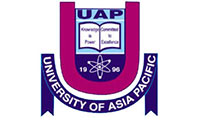ince its inception in 1967, the Center for Research and Communication (CRC) has grown to become the University of Asia and the Pacific in a tradition of excellence, service and whole-person education.
As its name suggests, communication is key in CRC’s founding mission that since its early years, UA&P has also striven to evolve with the rapid developments in the field.
The University’s programs are distinct in their focus on the human person’s multi-faceted development. Faithful to our Credo, we aspire to form “individuals who are professionally competent, creative and enterprising, zealous for the common good, and capable of making free, morally upright choices, and who can thus act as positive agents of change and service to society.”
UA&P at a Glance
A youthful, academic environment.
The University of Asia and the Pacific (UA&P) is a private, not-for-profit institution of higher learning that offers some of the most outstanding academic programs in Asia. It provides a powerful combination of liberal education and professional specialization. The formation of UA&P students is facilitated by an environment conducive to learning, qualified and dedicated teachers, a superior faculty-to-student ratio, and well-maintained facilities.
Brief History
UA&P began in 1967 as the Center for Research and Communication, a think tank conducting research and offering graduate courses in economics and management. CRC started out small and inconspicuous, but gradually expanded its educational activities. It was awarded university status in 1995, and although it has since been known as the University of Asia and the Pacific, the mission remains the same: the fullest development of everything that is human in the individual.
The President
The president of UA&P is Dr. Winston Conrad Padojinog. He was installed as the fourth University President in 2015.
The Faculty
The UA&P faculty is composed of devoted and competent academicians and industry practitioners.
The Alumni
UA&P alumni distinguish themselves in the workplace as much by their work ethic and discipline as by their technical prowess. They bear out that the broad education, professional preparation, and personal formation they have received as university students have equipped them well for the workplace.

